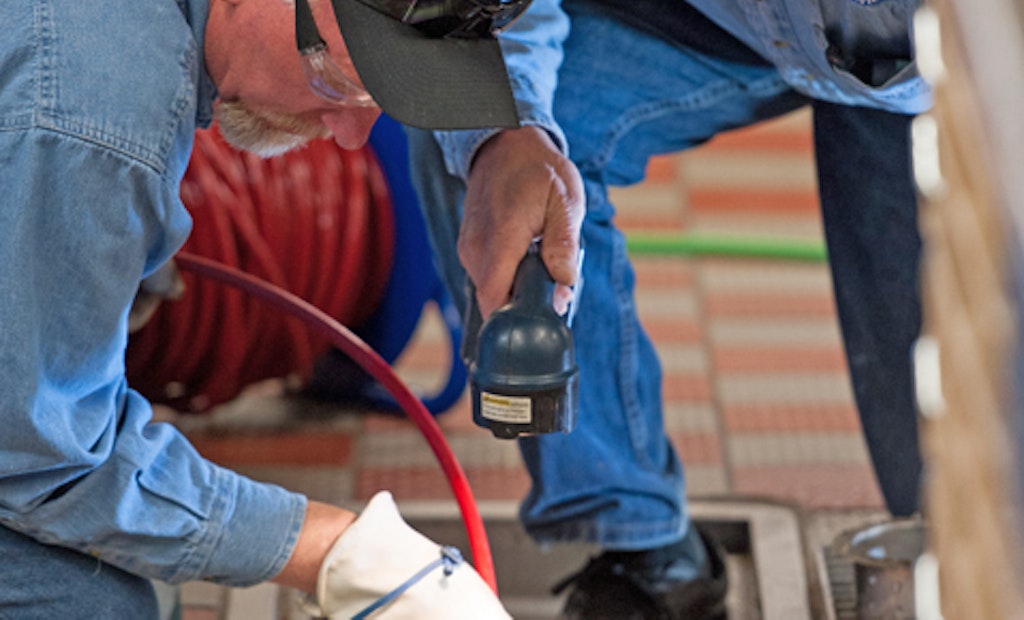
Interested in Plumbing?
Get Plumbing articles, news and videos right in your inbox! Sign up now.
Plumbing + Get AlertsYou’ve been in the drain cleaning and plumbing business for decades, so your knowledge of waterjetting and pipeline inspection equipment and business-building issues is extensive. But perhaps some of these industry issues are so engrained in your day-to-day operations that you’ve never stopped to consider whether what you’re doing is beneficial or detrimental to your business.
Do the words “free video inspection” send a shiver down your spine? Do you spend frivolously or save psychotically?
For those drain cleaners new to the industry, these issues might not be bad habits, yet, but let’s make sure they don’t become regular practices.
Let’s put some drain cleaning myths to rest.
1. A hot-water jetter won’t make a difference in work performance.
Marcus Rodriguez, owner of Umbrella Plumbing & Drain Cleaning LLC in Aurora, Colo., relies on his hot-water jetter to give him an edge when it comes to clearing tough grease clogs. Why? His trailer-mounted Hot Jet USA water jetter — outfitted with optional hot-water capability — makes short work of tough drain cleaning problems.
“Most times, it does a job about twice as fast as using cold water,” Rodriguez says in a recent Money Machines article. “It’s especially good for cleaning out grease-trap lines.
“The hot water, which gets heated to a temperature of 180 degrees, liquefies the grease,” he explains. “I’ve used both cold and hot water and there’s a big-time difference. With cold water you can spend a lot of time working in one small area and it can create clogs in the rest of line … chunks of grease hook up together farther down the line and form another clog. But by using hot water, that doesn’t happen because it’s liquefied.”
Rodriguez says technicians can do jobs twice as fast, which means more time, and time is more valuable than money. “Even if we get in just one more job a week because of that, we’re making $1,400 to $1,600 more revenue per week.”
Don’t go throwing your equipment to the curb. This is just some sage advice to consider all the options when it’s time to invest in new equipment.
Want more equipment options? Here’s a selection of water jetters to meet all your drain cleaning needs.
2. I can’t save and spend to help business succeed. It’s either one or the other.
Think you have to choose between saving and spending to help your business flourish? Wrong. According to a recent Money Manager column, you can do both.
“Cutting expenses might seem like a sign of trouble, but it doesn’t have to be,” says the article. “Even the most profitable business can benefit from a long, hard look at how it spends and where it can rein in expenses.”
Not so fast. The other side of the money debate is determining where you might profitably spend more – and the right decision there can be just as important to your long-term success.
Take a deep breath. Now relax. This doesn’t mean going out and blowing a month’s revenue on new computers for the office or the newest gadgets all your technicians have been begging for. However, if your employees are using outdated phones and more up-to-date technology — smartphones — would make them, and the company, more efficient, then it would be a good investment. More productive employees mean a more productive business. And you know what that means? More money in the long run.
Bottom line? Find a balance between what the business needs, what employees (and you!) want, and how both of these lists overlap to create a healthy saving/spending equilibrium.
3. I’ll lose money if I offer free video inspections.
With nearly three decades in the plumbing, repiping and drain cleaning industries, Randy Rushing knows how far that is from the truth. “We do a lot of our video inspections for free because we can show customers what’s right and what’s wrong,” says the owner of Peerless Plumbing located in Phoenix. “Everything is not always a disaster, and by giving free camera inspections, homeowners can see we won’t cause so much damage.
“The cameras are our best tool because we don’t have to do sleight-of-hand sales pitches; once the owner sees it, we assure him we can fix it.”
For sanitary sewer line inspections, Peerless follows a detailed procedure each time. “We pre-video all sanitary sewer lining jobs,” Rushing says. “We view that with the owner so he sees the exact condition on a high-definition color camera.”
If customers are more educated about the problem, they will be more willing to move forward with any necessary repairs or replacements, putting more money in your pocket.
There will always be pros and cons to offering free services. But perhaps it’s time to consider how free video inspections could benefit your customers and your bottom line.






